We hope that each of you, our readers, will enjoy and appreciate this article we present about these 5 Magnificent Middle East Species. It was certainly our pleasure to gather the information for you. May it provide you with both education and increased awareness.
Certainly, these few species listed herein represent only a portion of the wonders found in this amazing region. It’s our belief, though, that they serve as excellent representations of the wonders found here. Check out some of our other articles for similar marvels.
Caspian Seal
Caspian Seal Facts
- Leading off this article about these 5 Magnificent Middle East Species comes the beautiful mammal appropriately known as the Caspian Seal.
- This beautiful small mammal, unique in a surprising way, most frequently goes by the informative common name due to its range. Unlike many of its relatives, this intriguing creature does not, for the moment, at least, have another general name.
- Among scientific professionals, such as researchers, however, it’s typically referred to by its official name. Fortunately for the layperson, that’s an extremely simple term, as such things go. That’s because it holds the technical moniker of the Pusa caspica.
- The animal received that official name due to the work of the respected German naturalist, Johann Friedrich Gmelin. He recorded the first official recognition of the pinniped as a separate and distinct species. He further accomplished this in 1788.
- Regardless of the name one chooses to employ, though, it remains a remarkable work of Nature and evolution. Evidence also suggests an intriguing origin for the creature. It’s thought to be descended from ringed seals trapped in the region by melting ice sheets.
- Sadly, its population, already limited by the nature of its range, appears to be declining. The principal reason for this seems to be a virus spreading through its population. Due to these factors, the IUCN currently lists the mammal as Endangered on its Red List.
- The amazing animal also faces other threats, as well. These include intentional human activities, such as hunting. Commercial ice-breaking routes also disturb important areas of their range. It’s additionally endangered by climate change, as most species.
Caspian Seal Physical Description
The amazing Caspian Seal quickly draws the attention of those fortunate enough to encounter it. It does so, however, for reasons other than sheer physical size. That’s because this particular seal, despite its other fascinating attributes, ranks as one of the smallest seals.
Like many of its kind, and indeed most species, it displays a moderate degree of the physiological characteristic of sexual dimorphism. In its case, though, this trait manifests itself in terms of pure physical size. Otherwise, the two genders appear virtually identical.
Overall, males of the distinctive pinniped tend to develop as slightly larger and bulkier in physique. Mature males average around 190 lb (86 kg) in weight. Although exceptional individuals do occur, of course, even they rarely exceed this amount by any great percentage.
In general, physicall mature specimens attain a body length of 50 – 51 in (126 – 129 cm). The genders also display different growth patterns. Females begin life somewhat smaller than males, but reach full growth more quickly. Males take 30 – 40 years, females just 10.
The tantalizing Caspian Seal also displays a visually appealing color pattern. This primarily consists of a background of gray. That, however, varies from light to dark, between individuals. The stomach also tends to display a very light gray, almost off-white, coloring.
Individuals of both genders also distinguish themselves from related creatures in another way. This species possesses comparatively short flippers. The front flippers typically develop moderate-sized claws. Shorter, narrower one’s however, usually manifest on the rear flippers.
- Kingdom: Animalia
- Phylum: Chordata
- Class: Mammalia
- Order: Carnivora
- Family: Phocidae
- Genus: Pusa
- Species: P. caspica
Caspian Seal Distribution, Habitat, and Ecology
The beautiful Caspian Seal evolved as native to a region of the world already well known for its abundance of natural wonders. Unfortunately for it, though, it developed in a highly restricted portion of this region. This area lies between the continents of Europe and Asia.
That particular area, however, holds an interesting distinction. The very name of the animal further provides a clear indication of that precise zone of habitation. That’s because the impressive mammal lives exclusively in and around the waters of the Caspian Sea.
Although its overall range is limited, it typically makes the most of what it has available. That’s due to the fact that individuals and groupings alike appear in many different parts of the region. These inhabit the shoreline, rocky islands, and floating blocks of ice equally.
It does tend to remain in shallower regions, though. Most specimens rarely dive to depths greater than 160 ft (50 m). Occasionally, however, scattered individuals go much deeper. The greatest depth of dive ever recorded for this specific species reached 540 ft (165 m).
Much like its relatives, the Caspian Seal feeds as a carnivore. In its case, this consists primarily of various locally available varieties of fish. During certain periods of the year, though, many individuals also consume moderate quantities of differing small crustaceans.
Throughout most of the year, this wonder of Nature lives a mainly solitary life. The exception occurs during mating season, of course. Following an 11-month gestation period, the female generally gives birth to a single pup. A typical lifespan also equals 50 years.
Socotra Bluet
Socotra Bluet Facts
- Next up among our choices for inclusion in this compendium of 5 Magnificent Middle East Species appears the remarkable insect known best as the Socotra Bluet.
- The term used herein represents one of the common names for a remarkable variety of damselfly. The marvelous insect also remains known to some people by another term. In some parts of its range the invertebrate is known as the Grant’s bluet.
- Entomologists, though, know this small wonder of Nature better by the scientific name of Azuragrion granti. Regardless of the name one uses for it, however, this creature stands out from its many related species, though not always for enviable reasons.
- Unfortunately, researchers currently do not know a great deal about the life of this beautiful arthropod. This lamentable lack of information occurs mainly due to the relative remoteness and extremely inhospitable nature of its habitat.
- Although it appears to be locally abundant, the IUCN currently lists the invertebrate as Near-Threatened, due to a combination of factors. This status further appears on the organizations Red List of Threatened Species, which it continually updates.
- Given the nature and scarcity of its native habitat and range, the species also faces several threats to its continued existence as a species. Habitat loss also obviously constitutes a great danger, but its greatest threat consists of climate change.
- Considering the various difficulties involved, very few photos of this insect understandably exist at all, let alone ones of good quality. As a result, only the first image used in this article is of the Socotra Bluet. The rest consist of related creatures.
Socotra Bluet Physical Description
Much like the related species shown above, the Socotra Bluet also typically achieves a comparatively moderate size for those of its Family. This particular species, however, unlike some others, does not display any noticeable degree of sexual dimorphism.
Adults of both genders typically attain a highly respectable size, especially compared to other members of its Family. An average mature adult commonly attains a body length of about 3 in (7.6 cm), and also possesses a wingspan averaging around 5 in (12.7 cm).
The body of the Socotra Bluet also evolved as extremely elongated, and primarily displays a light blue color, with scattered black markings in various locations. Interestingly, the narrow and virtually transparent wings remain held vertically when the insect sits at rest.
- Kingdom: Animalia
- Phylum: Euarthropoda
- Class: Insecta
- Order: Odonata
- Family: Coenagrionidae
- Genus: Azuragrion
- Species: A. granti
Socotra Bluet Distribution, Habitat, and Ecology
The known native range of the remarkable Socotra Bluet also remains extremely limited. The marvelous damselfly further appears to only live in one location in the entire world, which severely limits its chances to survive at all, let alone to expand its range.
Incredibly, this tiny yet remarkable marvel of Nature seems to only live on the eastern portion of one island. That location’s the tiny island of Socotra, legally a part of Yemen. Geographically, though, the location remains considered as a part of Africa.
Even within this extraordinarily limited zone of habitation, the delicate-winged wonder does not make just any area its home. This amazing creature further seems to only inhabit lakes, ponds, marshes, and rivers, since it appears to breed in moving water.
Returning to the lack of detailed information, researchers have no confirmed information pertaining to the diet of the Socotra Bluet. However, it remains assumed that its food source consists of various tiny local insects, in keeping with the pattern of others of its kind.
Petra Iris
Petra Iris Facts
- The gorgeous, as well as surprising, Petra Iris, holds down the third spot in this listing of 5 Magnificent Middle East Species, though only due to random selection.
- This gorgeous product of Nature and evolution most frequently goes by the somewhat informative common name for wholly excellent reasons. For the moment, the stunning Angiosperm has no other generally accepted non-scientific moniker by which it’s known.
- Scientific professionals, meanwhile, such as researchers, use its formal name when referring to it. Thankfully for those among us who aren’t scientists, that’s a relatively easy name, as such go. That’s because it bears the formal name of the Iris petrana.
- It received that title due to the work of the respected American botanist, John Edward Dinsmore. He accomplished the first official acknowledgement of the plant as a separate and distinct species. It also bears its name in honor of the ancient city of Petra.
- For the moment, the IUCN has no listing of the species on its Red List of Threatened Species. The exact reasons for this omission remain unclear, however. At least one country within its range, however, formally lists it as an Endangered Species.
- Since the 1950’s, a dramatic decline in its population has been noted by officials. Conservation efforts are underway, in some regions, though. In one country, its only known, very tiny population grouping now lies within the confines of a Nature Reserve.
- Regrettably, the marvelous Petra Iris faces several threats to its existence. In the near term, uncontrolled grazing by local animals poses a danger. It’s also often picked by locals. The greatest threat it faces in the long term, though, is climate change
Petra Iris Physical Description
The stunning Petra Iris serves as yet another example of the fact that Nature places no importance on sheer physical size. That’s true since this plant develops as a relatively small one. That holds particularly true in comparison with many of its closely related species.
This botanical wonder of evolution develops from rootstalks, known as rhizomes. Each stalk produced by this structure further develops as comparatively thin and erect. These stay short, however. An average height, in fact only equals approximately 10 in (25 cm).
These stalks also produce multiple leaves, developing near the base. This folaige has an elongated, sword-like shape. Each also manifests a light grayish-green color. Evolution also provided the several leaves each flower develops with a thin, waxy coating for its protection.
It’s the remarkable blooms of the Angiosperm, though, that garner the most interest. That’s due to their highly distinctive pattern of coloring. Intriguingly, these appear in several, various dark shades. Those range from brown or a burgundy hue, to dark violet or purple.
Some specimens of the amazing Petra Iris, however, in the right lighting, appear to possess a wholly black shade! It’s these specimens that understandably attract the most interest. Its two sets of petals also have different appearances. One evolved a set of beard-like hairs.
- Kingdom: Plantae
- Phylum: Angiosperm
- Class: Monocots
- Order: Asparagales
- Family: Iridaceae
- Genus: Iris
- Species: I. petrana
Petra Iris Distribution, Habitat, and Ecology
Unfortunately, the tantalizing Petra Iris evolved as native to an extraordinarily restricted zone of habitation. That description as unfortunate applies to both the plant itself, and those of us who appreciate Nature. It’s also currently unknown if it ever appeared elsewhere.
In general, its evolution placed it within the confines of the temperate zones of the continent of Asia. There, however, it appears in only a few, very tiny areas. These include near one town in southern Jordan, the Negev Desert, in Israel, and the Dead Sea Basin.
To the astonishment of many individuals, the intrepid plant also developed as native to habitat types hostile to most of its related species. Incredibly, this Angiosperm makes its home in highly arid regions. More specifically, it’s actually an established desert-dweller!
It also appears in related regions, though. These consists of areas of marginal lands next to the same desert sections. All known concentrations of this marvel of Nature share yet another limitation. These all appear at elevations ranging from 1,410 – 1,870 ft (430 – 570 m).
In the wild, the Petra Iris most commonly propogates via seeds. This action may also be accomplished via the rhizomes it produces, however. Those same seeds, though, spread by a combination of methods. The wind blows some, yes, but local insects also carry others away.
Like many of its relatives, this delicate flora also evolved as moderately toxic in nature. This further applies to most parts of the species. If ingested, stomach discomfort and vomiting often occur. Even handling certain parts of the plant sometimes causes irritation of the skin.
Honey Badger
Honey Badger Facts
- Next up in this composition of 5 Magnificent Middle East Species we present the second mammal to make an appearance, the fabulous Honey Badger.
- This truly impressive creature most frequently goes by the somewhat informative, yet certainly descriptive, common name in most of its range. The remarkable animal does, however, also go by another, alternate name. That’s the short term of the ratel.
- Professionals, however, such as researchers, tend to refer to the mammal by its technical name. That’s the relatively simple to pronounce term of Mellivora capensis. Yet, regardless of the term one chooses to employ, it remains an intriguing species.
- It also owes its recognition to the German naturalist, Johann Christian Daniel von Schreber. That’s because this respected scientist made the first acknowledgement of it as a separate and distinct species. This noteworthy event occurred in 1776.
- He didn’t assign it the name it holds now, though. He originally gave the newly recognized species the name Viverra capensis. The current name owes its existence to the efforts of others, including Gottlieb Conrad Christian Storr, and John Edward Gray.
- Fortunately, the Honey Badger appears to be maintaining a population base that’s both sizeable and stable. This trend also seems to hold true throughout the entirety of its natural range. The IUCN, therefore, presently lists it as Least Concern on its Red List.
- The animal nevertheless faces potential threats to its existence. These, in fact, it shares with most species around the world. Habitat loss, due to human expansion, certainly qualifies as one. Its greatest threat, though, now likely consists of climate change.
Honey Badger Physical Description
The incredible Honey Badger evolved a most distinctive physical appearance. Though this attribute certainly isn’t its only claim to fame, it’s nonetheless a noteworthy one. The impressive creature is therefore easily recognizable in all parts of its native range.
Like many of its relatives, however, this Mustelidae, displays a fairly strong degree of the characteristic of sexual dimorphism. In its case, this principally manifests itself in terms of sheer physical size. In all other ways, therefore, the sexes appear identical.
More precisely, the males attain a much greater average physical size than their female counterparts. The larger males range in body length from 22 – 30 in (55 – 77 cm) in body length. The impressive tail also adds an additional 4.7 – 11.8 in (12 – 30 cm).
At the shoulder, meanwhile, males average 9.1 – 11 in (23 – 28 cm) in height. Weights, though, vary depending on region, even among the same gender. Overall, however, this measurement equals roughly 14 – 26 lbs (6.4 – 12 kg) for the much larger males of the species.
The females, though, attain sharply different measurements. This gender of the species attains an overall average weight from different regions of about 30 – 40 percent less than that of the males. The other body measurements follow the same approximate ratio.
Both sexes of the Honey Badger othwrwise appear virtually identical. This includes a thick and broad body shape. The head’s small and flat, and the skin’s extremely thick and strong. The body presents as dark black, except for a large white band on the upper body.
- Kingdom: Animalia
- Phylum: Chordata
- Class: Mammalia
- Order: Carnivora
- Family: Mustelidae
- Genus: Mellivora
- Species: M. capensis
Honey Badger Distribution, Habitat, and Ecology
Fortunately, both for the fascinating Honey Badger itself, and for those of us who appreciate Nature, it has an extensive range of habitation. In point of fact, this astounding product of evolution actually evolved as native to a comparatively broad swathe of the globe.
More precisely, though, in addition to other regions, the powerful mammal evolved as indigenous to a large portion of sub-saharan Africa. From there, however, its range extends through such areas as Arabia, Iran, and even reaches as far as western Asia.
Within that already expansive zone of habitation, however, it displays even greater versatility in term so fits choice of habitat types. That’s due to the fact that the mammal appears in virtually every ecosystem within that range. This provides it with a great advantage.
This flexibility in where it lives also extends to altitudes. That’s because some populations live at or near sea level in parts of its range. In other areas, meanwhile, many groupings appear, and in equal numbers, at elevations of up to 13,123 ft (4,000m) above sea level.
Throughout the majority of their lives, most individuals live a primarily solitary life. During breeding season, though, pairs do occasionally hunt together. Though primarily carnnivorous in nature, individuals do sometimes augment their diet with vegetables.
Interestingly, the Honey Badger possesses the most varied diet of any known member of its Family, except for the wolverine. This includes various, rodents, insects, and snakes, even poisonous ones. It also often raids beehives for honey, thus the common name.
Rose of Jericho
Rose of Jericho Facts
- Closing out this article we’ve put together about 5 Magnificent Middle East Species we give you the astonishing marvel of nature named the Rose of Jericho.
- Clearly to be seen, the attention-grabbing name it now possesses serves as the much more pronounceable term for an incredible plant. That’s because it serves as the common name for the rather fascinating Anastatica hierochuntica.
- Remarkably, this intriguing plant also remains renowned among researchers for one particular reason. It’s one that may surprise you, however. That’s because this fascinating species holds this status due to its truly astonishing resistance to desiccation.
- The distinctive plant additionally remains considered by many experts in the field to represent an extremely hardy form of a surprising type of plant. This fascinating yet bewildering species technically represents a type of tumbleweed.
- In ancient times, this amazing product of evolution had a very specific and highly beneficial usage. During that era, a wise man or shaman actually often used this plant as a means of predicting if rain was imminent. How’s that for a natural marvel?
- For the moment, though, the IUCN does not yet have a classification for this extremely interesting plant on its Red List of Threatened Species. This holds true due to the fact that, for the moment, at least, its numbers appear to be relatively stable.
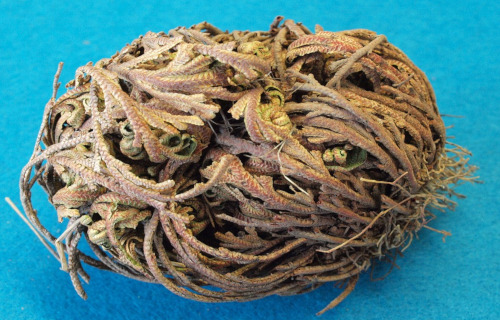
Rose of Jericho Physical Description
Perhaps most notably, although remarkable, and visually rather distinctive, the Rose of Jericho nevertheless remains a small species of plant. But, what the plant lacks in terms of size, it easily makes up for in distinctiveness. Nature places no importance on size.
In point of fact, even truly exceptional individual specimens rarely achieve a height of more than 6 in (15 cm). Most individual specimens, though, actually a somewhat smaller overall size than that. This typically only equals approximately about 4 in 10 cm).
The impressive Rose of Jericho also, and once again, surprisingly, represents a type of annual herb. In appearance, this marvelous work of Nature most commonly displays a light gray in color, and produces small white flowers. This makes for a striking combination.
But, while quite small, the seeds of this highly adapted plant remain far from fragile. In fact, these remain extremely hardy and well protected by the surrounding leaves produced in large quantities. This evolutionary trait thus helps serve to ensure continuance of the species.
- Kingdom: Plantae
- Phylum: Angiosperms
- Class: Eudicots
- Order: Brassicales
- Family: Brassicaceae
- Genus: Anastatica
- Species: A. hierochuntica
Rose of Jericho Distribution, Habitat, and Ecology
The incredible Rose of Jericho evolved to survive its habitat, like most species. It thus developed its sincerely astonishing hardiness and regenerative abilities for a specific reason. This is completely understandable, because of the severity of its native climate.
More specifically, the marvel of Nature evolved as endemic to the extremely arid regions of Asia. The unique Angiosperm most commonly occurs in the countries of the Middle East and the Sahara. To date, it currently remains unknown if it ever appeared anywhere else.
Even more specifically, however, this highly evolved species only inhabits the various desert regions of eight modern countries. These locations consist solely of the regions now forming the countries of Egypt, Iran, Israel, Palestine, Jordan, Syria, Iraq, and Pakistan.
The amazing Rose of Jericho possesses an extraordinary evolutionary trait. Specimens dry up virtually completely after the end of the local rainy season. At that time, the leaves of each individual plant contract tightly, thereby protecting the precious seeds within.
This wonder further remains this way for extended periods. It can, in fact, actually lie dormant for months or even years, presenting a highly convincing appearance of death. Yet, when the rain finally comes, it opens quickly, to receive the life-giving water.
5 Magnificent Middle East Species
We hope that each of you thoroughly enjoyed reading, and hopefully learning from, this article we’ve written about these 5 Magnificent Middle East Species. It’s also our hope that doing so has left you with either a new or renewed appreciation for such wonders of Nature.
Unfortunately, many of their kindred around the world now find themselves facing strong threats to their continued existence as a species. Many of those dangers, in fact, stem from the actions of mankind. We must do all we can to protect and preserve them all.
Check out our other articles on Spectacular Halloween-Appropriate Species, 5 Astounding Spiders of Asia, Spectacular Dolphins Throughout Our World, 5 South China Sea Species
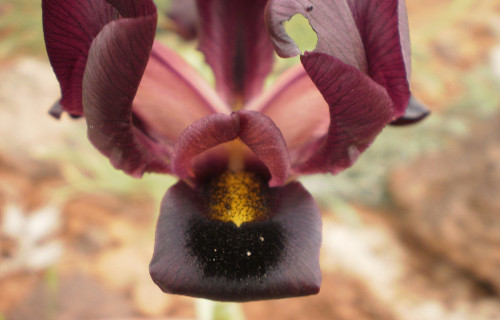


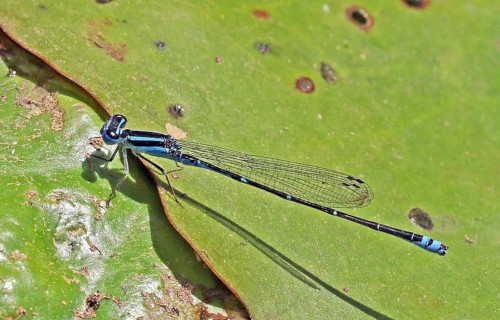
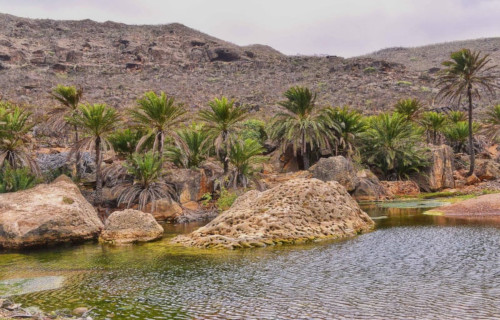
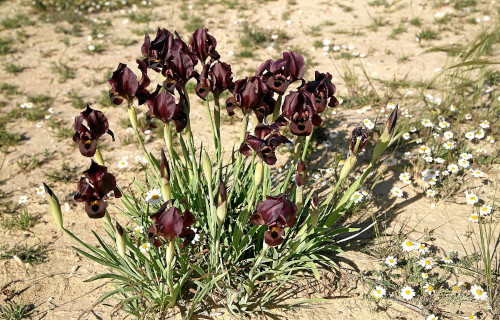
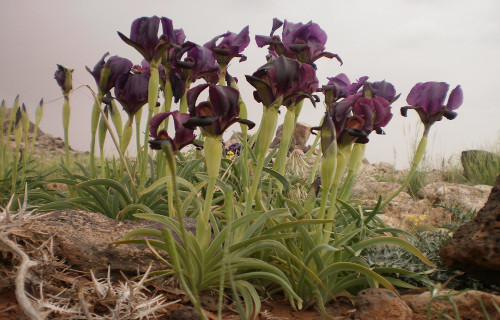
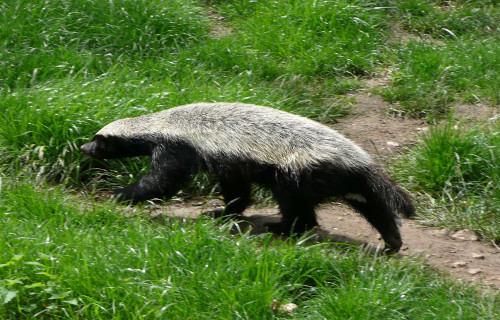
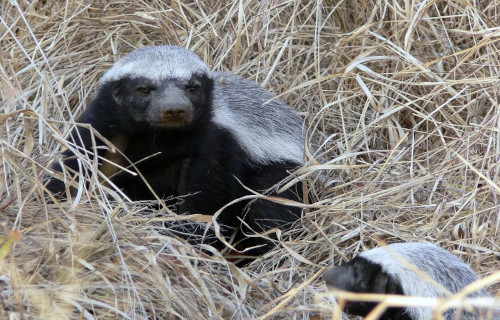
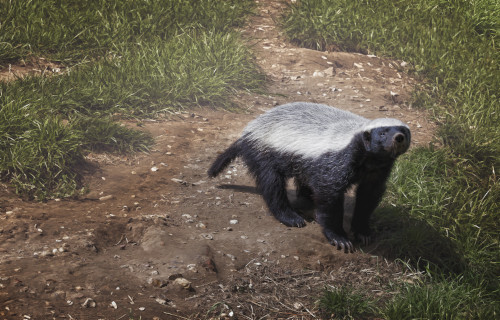
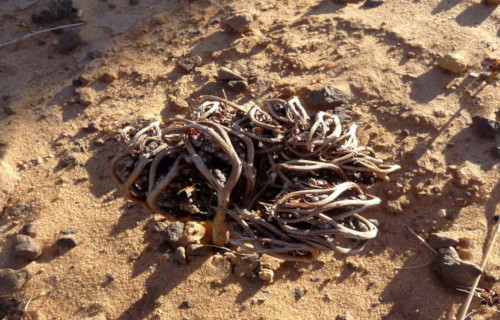









Leave a Reply